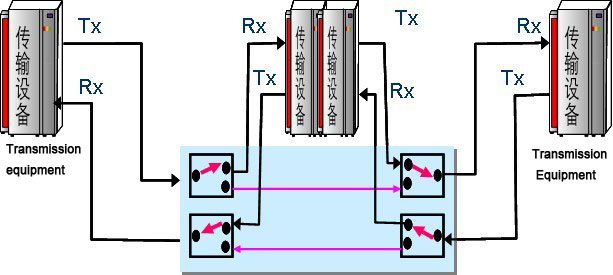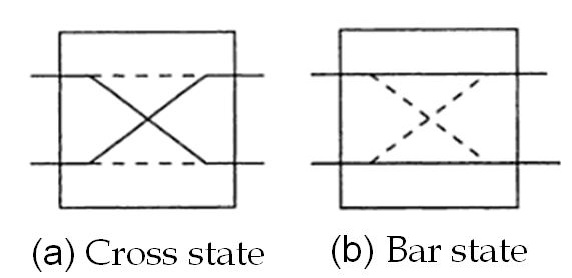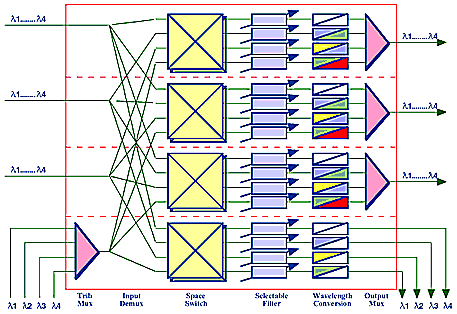
Full 2×2 Fiberoptic Switches
GEZHI's full 2×2 fiber optic switch offers industrial leading performance. The switch is designed for use in re-configurable optical add/drop multiplexers, optical cross-connect systems, and network switching for fault protection and restoration applications. The switch can be directly mounted on printed circuit board (PCB) and has contacts to provide an electrical readout of the switch state (Cross or Bar). The latching feature ensures the switch remains in current state when electrical power is off. GEZHI can provide customized designs to meet specialized feature applications.

GEZHI 2×2 Optical Switch is build the centre of OADM equipment. OADM is one important element of optical network equipment. Usually used on MAN and backbone network, On more area, there are all used optical switch on OADM optical singnal. Maily achieve the function of optical add & drop on DWDM network. As the using of optical switch, can configurate business actively, to increase the flexbility of OADM’s node. Same time, make the OADM node to support the protection remotor. When there have problems of networ, then Node will be take the problem’s business to spare routing. So increasing the network ability of life, protection and recovery.
Just as the picture below:

2×2 Full Optical Switch use in OPTICAL CROSS-CONNECT (OXC)
OXC switches optical signals from input ports to output ports. These type of elements are usually considered to be wavelength insensitive, i.e., incapable of demultiplexing different wavelength signals on a given input fiber. OXC is located at nodes cross-connecting a number of fiber pairs and also support add and drop of local traffic providing the interface with the service layer. A basic cross-connect element is the 2×2 cross point element. A 2×2 cross point element routes optical signals from two input ports to two output ports and has two states: cross states and bar states (see Figure 5). In the cross state, the signal from the upper input port is routed to the lower output port, and the signal from the lower input port is routed to the upper output port. In the bar state, the signal from the upper input port is routed to the upper output port, and the signal from the lower input port is routed to the lower output port.

Figure 5
To support flexible path provisioning and network resilience, OXCs normally utilize a switch fabric to enable routing of any incoming channels to the appropriate output ports and access to the local client traffic. The features that an OXC should ideally support are similar to these of an OADM, but additionally OXCs need to provide:
Strictly non-blocking connectivity between input and output ports
Span and ring protection as well as mesh restoration capabilities
Efficient use of fiber facilities at the optical level obviously becomes critical as service providers begin to move wavelengths around the world. Routing and grooming are key areas that must be addressed. This is the function of the OXC, as shown in Figure 6.

For more details of item, please check:
http://www.pm-fiber.com/index.php/product-detail/2×2-full-optical-switch/

